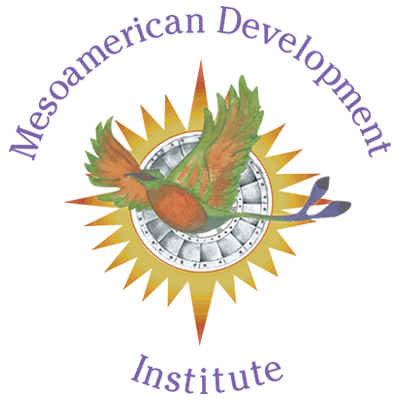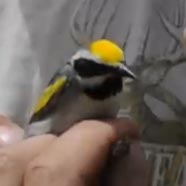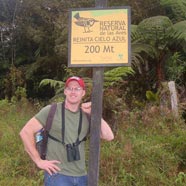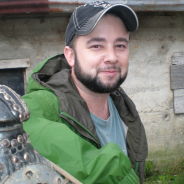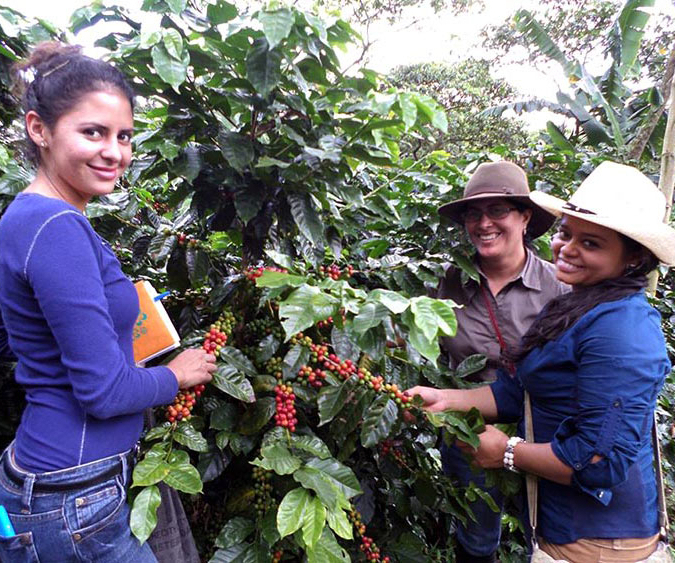
As you have your morning cup of coffee, what’s happening on coffee farms in other parts of the world might be more of a wake-up call than the caffeine you’re drinking.
Destructive farming methods for growing coffee are causing widespread deforestation in countries like Honduras, one of the world’s largest coffee producers.
“Climate change is absolutely going to ravage the coffee industry if the industry and its partners don’t understand how best to evolve,” said Jeff Larkin, an IUP biology professor whose expertise is making a difference.
Larkin is working with the Mesoamerican Development Institute as part of a National Science Foundation-funded research team that is finding innovative ways to turn things around. He brings expertise in working landscapes and the relationships between forests, native pollinators, migratory songbirds, and coffee yield to the team's current efforts.
He explained that they are finding ways to make coffee production gentler on the environment, from protecting the land, water, and habitat to using solar panels in a new, innovative way. And it’s working. They’re giving farmers—and coffee drinkers—more sustainable options.
Carbon Credits Help Farmers Preserve Habitat
In Honduras, the Mesoamerican Development Institute is compensating some coffee farmers for setting aside a piece of their land outside or around their farms as natural forest. MDI calls this land strategy Integrated Open Canopy (IOC).
Through carbon-credit trades in Ireland and Canada by MDI, coffee farmers in Honduras using IOC methods have been getting paid based on the carbon they’re preserving on their forested land.
The patch of forest they set aside benefits the entire farm, as well as the surrounding area, through increased biodiversity. The trees help fight climate change and attract birds that feed on insects. The tree roots break up compacted soil, hold moisture, and filter ground water.
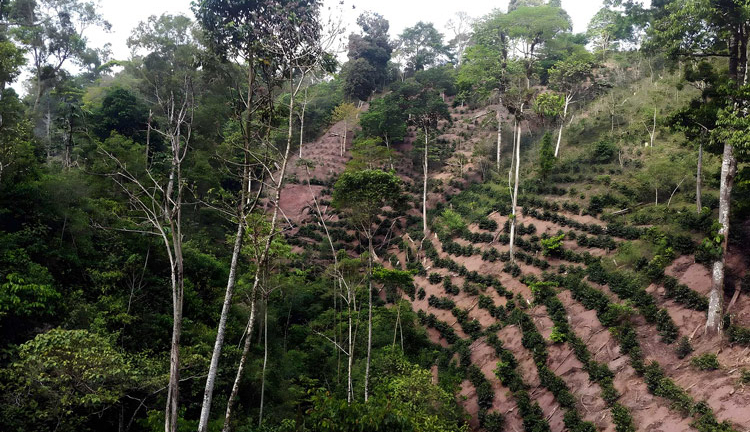
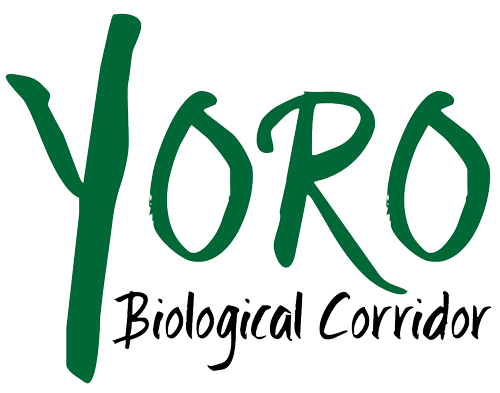 People tend to see the value in preserving nature in parks, but agriculture takes up so much land that a wide-scale improvement in how crops are grown can have a tremendous impact, according to Rich Trubey, director of program development at MDI, which also comanages two national parks in Honduras.
People tend to see the value in preserving nature in parks, but agriculture takes up so much land that a wide-scale improvement in how crops are grown can have a tremendous impact, according to Rich Trubey, director of program development at MDI, which also comanages two national parks in Honduras.
About 20 coffee farms are currently operating as IOC farms. An initiative is in the works to try to expand the scope of these farming methods by establishing the Yoro Biological Corridor, an approximately 4,600-square-mile region linking 15,266 registered coffee producers and 10 national parks.
The Yoro Biological Corridor could make it possible to expand the IOC sustainable coffee practices to many more farms.
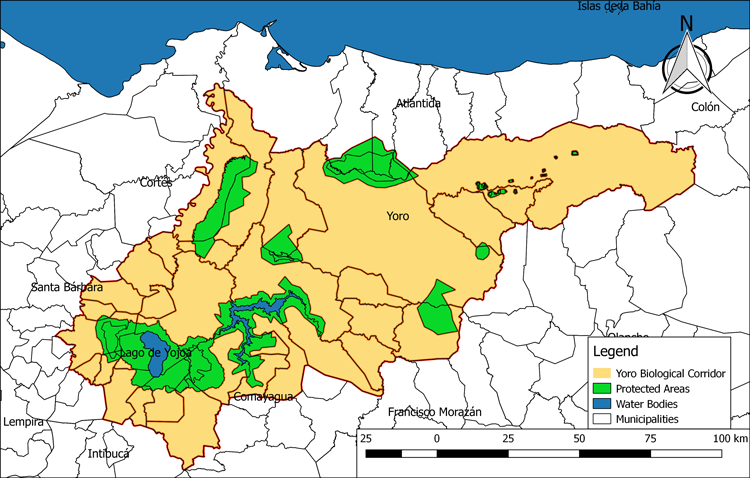
About 20 coffee farms are currently operating as IOC farms. An initiative is in the works to try to expand the scope of these farming methods by establishing the Yoro Biological Corridor, an approximately 4,600-square-mile region linking 15,266 registered coffee producers and 10 national parks.
Map used with permission from The Mesoamerican Development Institute
Saving Forests with Solar/Biofuel Bean Dryers
Coffee farming and processing are causing deforestation from two directions. First, forests are cut down for land to grow coffee. Then, more forests are cut down each year for wood used in traditional, wood-burning dryers for coffee beans.
Every year, an amount of wood equivalent to 16,062 acres of forest is cut and burned to fuel these dryers throughout Central America, according to MDI.
The experts at MDI might have an answer. They’ve introduced what they call the world’s first hybrid solar/biofuel-powered coffee-processing facility.
Behind The Scenes of Café Solar
It uses a revolutionary coffee-bean dryer, powered by solar panels and biofuel pellets made from processed coffee husks and other natural ingredients. Because a liquid biofuel is used for running lights and machinery, the entire facility is carbon neutral, according to Raúl Raudales, the director for research and planning for MDI in Honduras.

Solar/biofuel powered dryers are used to process the coffee beans.
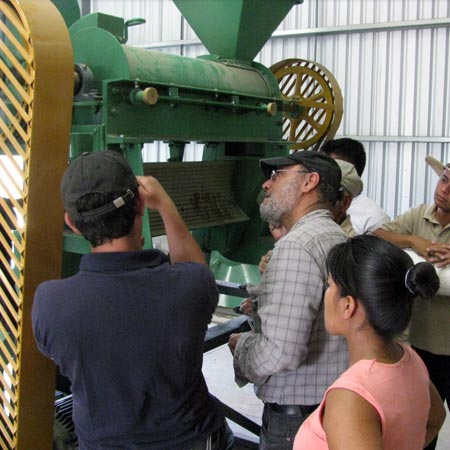
Machinery in the drying process is powered with liquid biofuel.
“Every single coffee bean consumed has to be dried within 48 hours from when it is picked,” Raudales said. “The consumption of energy is absolutely staggering. The average person drinking coffee doesn’t know the real story of how much energy the processing and drying requires.”
When coffee is dried in the new facility, no trees need to be cut down. It breaks a common cycle of yearly deforestation in the coffee industry. The solar/biofuel-powered dryers are even cheaper to operate and faster than the wood-burning method or a separate method of raking the beans for days in the sun on a hot cement slab.

From 2002 to 2020, total area of humid primary forest in Honduras decreased by 19% (Global Forest Watch).
From these efforts comes a sustainably grown, certified organic coffee sold internationally as Café Solar—and a whole lot of advantages for people in Honduras. Women owning or managing farms are receiving support and expanded opportunities. There are economic development incentives for farmers and new jobs emerging in the hybrid processing facility and in carbon trading. As deforestation is reduced, whole communities benefit from the positive effects, including preserving water resources.
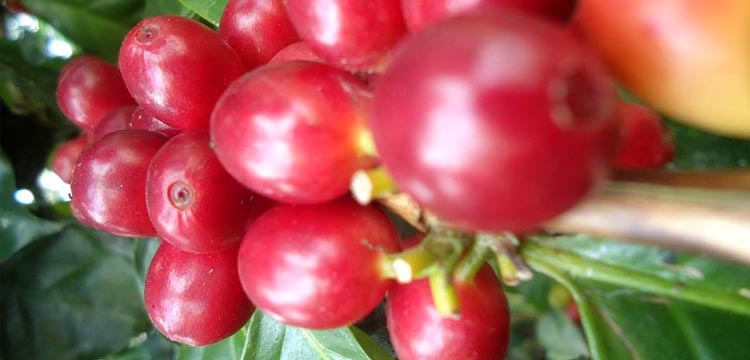
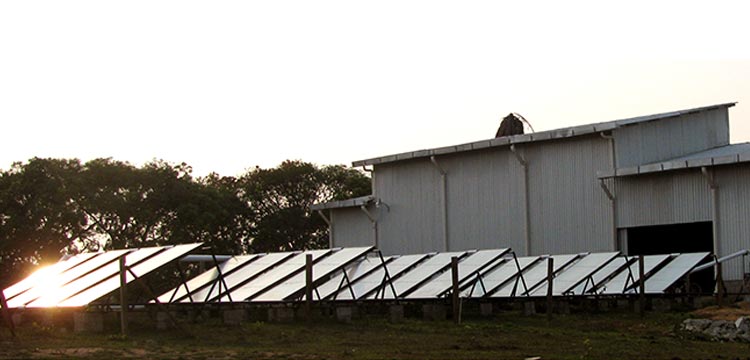
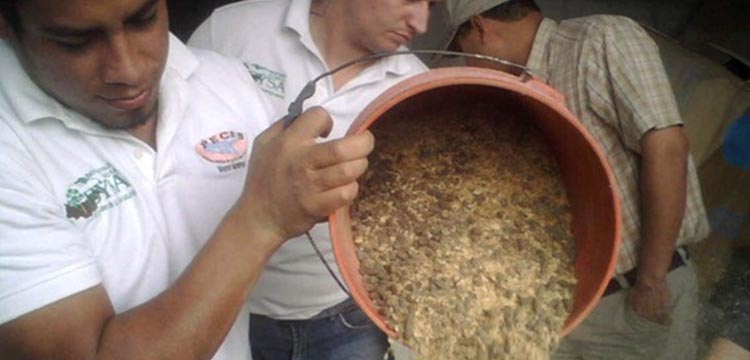
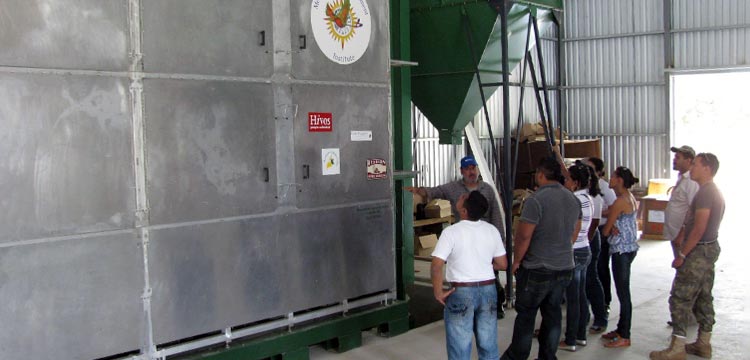
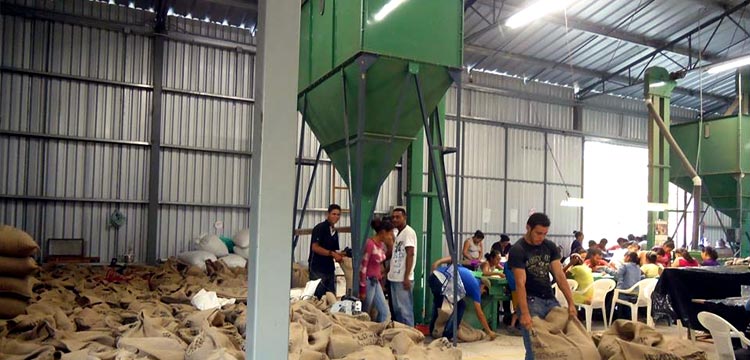
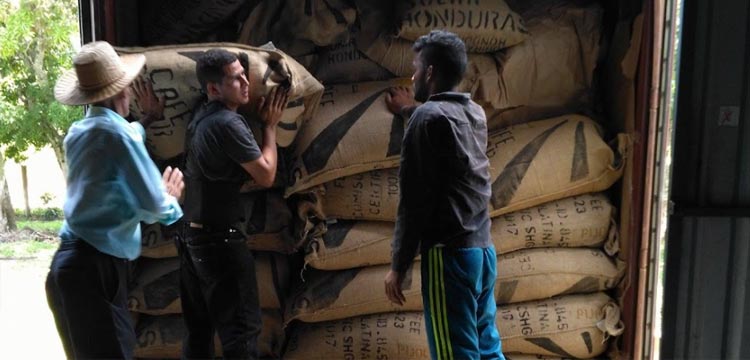
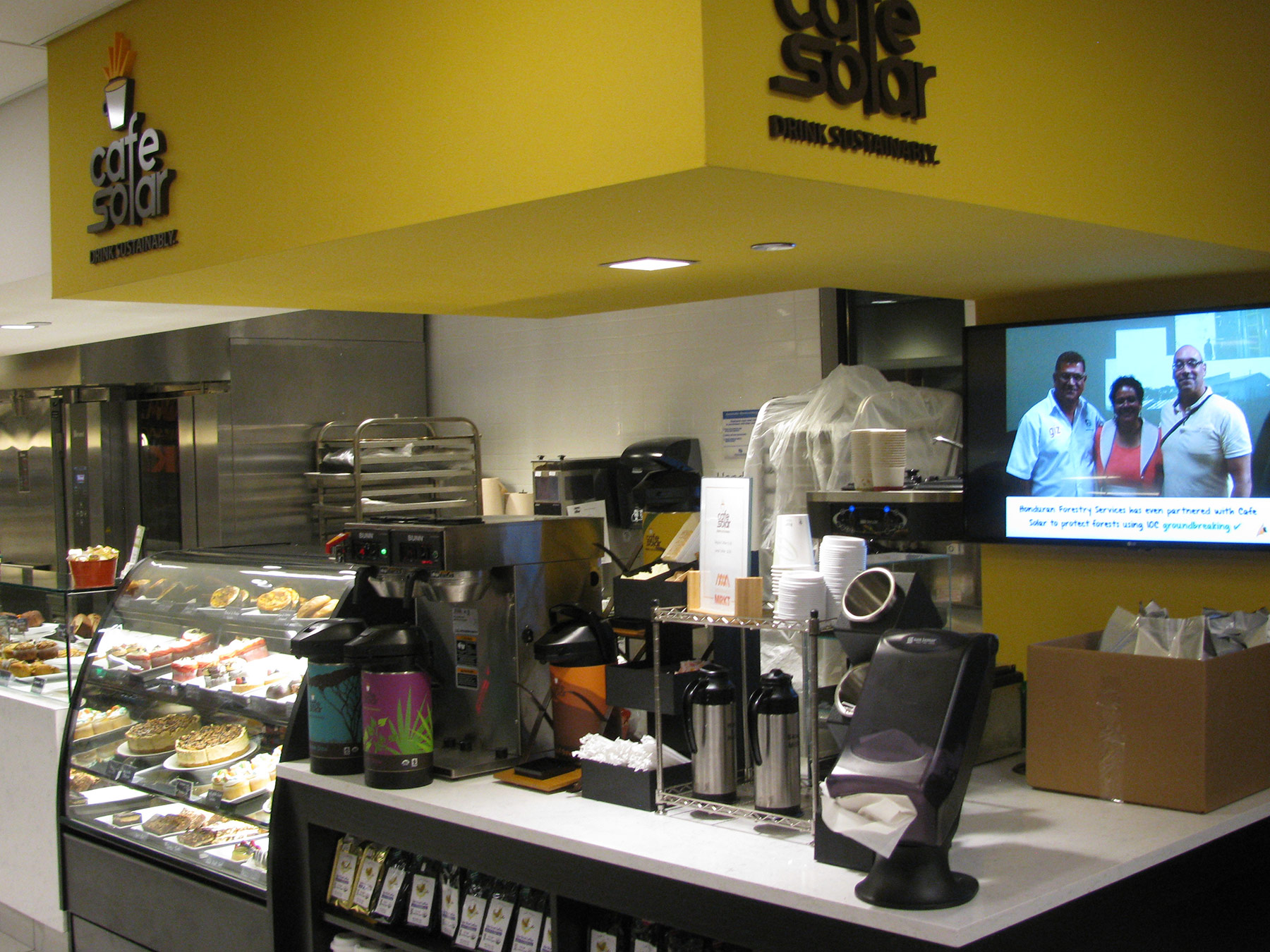

Want to try a cup?
Find out how to order their sustainable coffee.
Café Solar is a certified organic coffee. It’s available in Canada, Sweden, and Upton, Massachusetts; as well as in the Tampa, Florida region with cafés at the University of South Florida and Tampa International Airport.
Larkin Guides Science-based Conservation in Working Landscapes
Jeff Larkin brings his experience in conservation in working landscapes, like the coffee farms, to the table each week at virtual meetings of the NSF research team. At these meetings, the collaborators draw their knowledge together as they work to save forests and protect wildlife.
“To me, it’s like multidisciplinary research on steroids, involving experts in every field you can imagine that have a role in sustainable coffee—a forest ecologist, conservation biologists, a social scientist, a hydrologist, an economist, coffee industry and market experts, and more,” Larkin said.
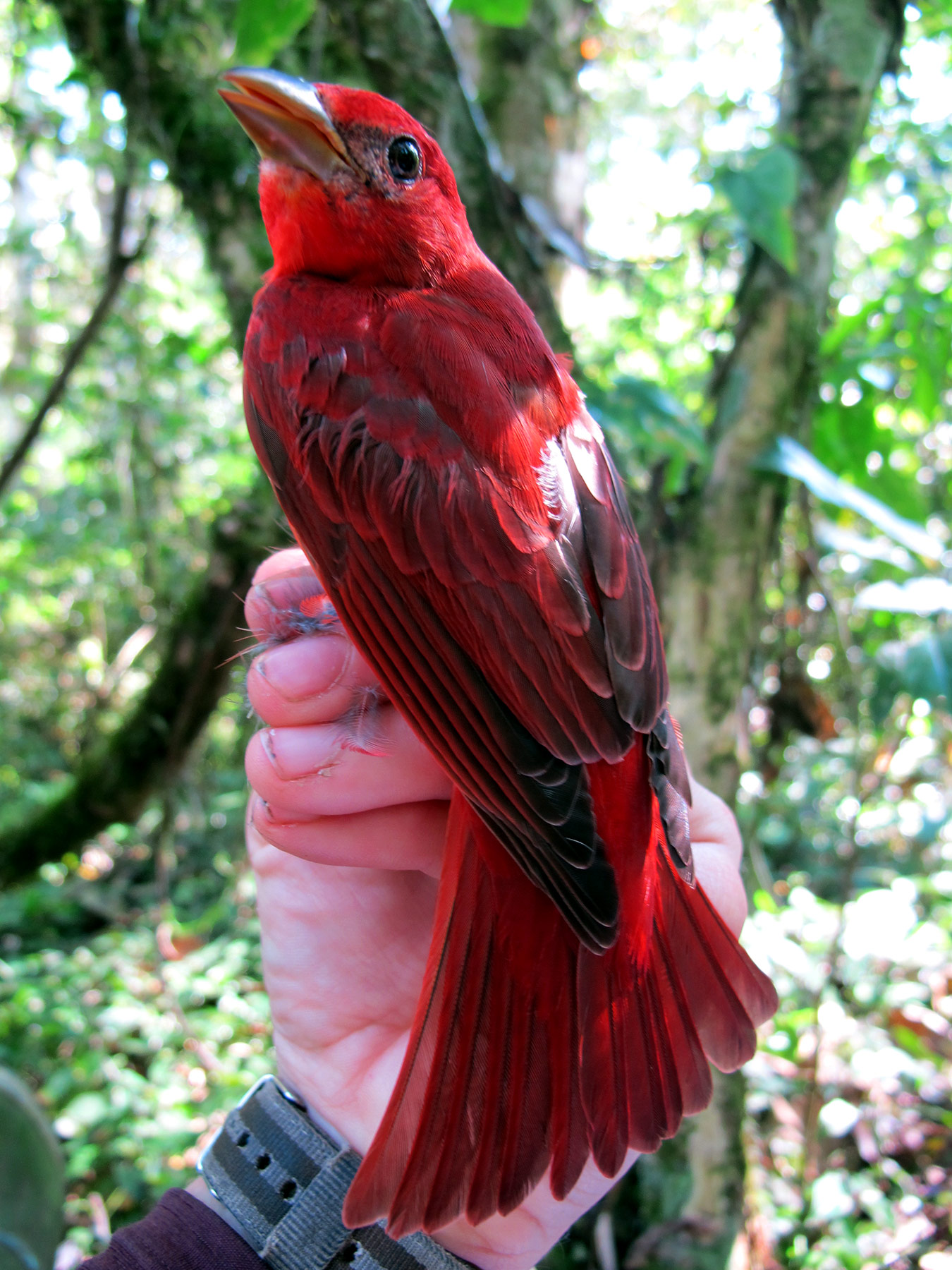
The team, which also includes engineers and other professionals, is funded under the NSF’s Growing Convergence Research program. It is designed to bring researchers and stakeholders together to tackle societal and scientific challenges that require a larger research community. Larkin’s role is understanding relationships between forests, native pollinators, migratory songbirds, and coffee yield. A new graduate student from Honduras will soon join him in this work.
Along with Larkin, the NSF team includes faculty at the University of Massachusetts, Tulane University, and the University of North Carolina Wilmington.
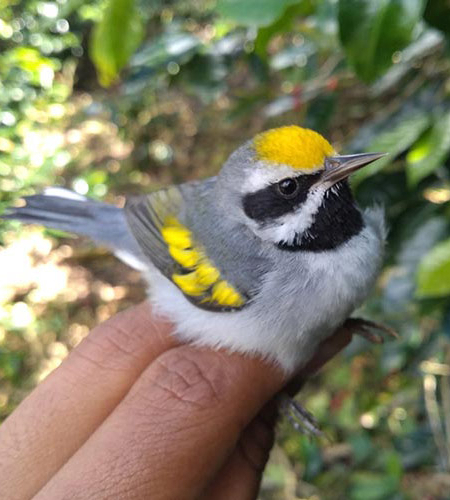
Birds Benefit from Integrated Open Canopy Farms
About 192 different species of birds have been recorded on the IOC coffee farms. Among the birds at risk is the golden-winged warbler. Larkin has researched this species and worked in the field with students to improve its breeding habitat, which includes portions of Pennsylvania.
Since 2013, Larkin has served as the American Bird Conservancy’s Eastern Forest Bird Habitat coordinator and as the science advisor for the Natural Resource Conservation Service’s Working Lands for Wildlife program. “My primary role in these positions is to work with conservation partners to implement science-based conservation in working landscapes of the Eastern United States and Central and South America,” Larkin said.
Loss of forest habitat in South and Central America is having an impact on the golden winged warbler and other migratory birds that spend their summers in Pennsylvania forests and their winters in tropical countries like Honduras.
Dave King is a research wildlife biologist for the US Forest Service’s Northern Research Station based at the University of Massachusetts. He’s a member of the NSF team and has studied the birds in the IOC forested areas for about 15 years.
“Some of the forest-dependent species that are unable to persist in shade coffee farms are able to exist using these IOC patches of forest,” he said. “There are more and more of us looking to find ways to keep biodiversity in these working landscapes.”
Shade coffee farming is different from the IOC method of leaving natural forest patches around coffee plantations, which typically grow coffee in full sun. In shade coffee farming, trees are spaced to provide a calculated amount of shade. “Shade coffee farms are a biodiverse habitat, but still, some bird species need actual forest,” King said.
Larkin’s published articles and research interests have included songbird ecology and conservation, habitat management and restoration, and the impacts of human disturbances on biodiversity.
“I believe strongly that researchers should take an active role in converting their conservation science into conservation action,” Larkin said. “Conducting research and building partnerships that lead to meaningful conservation outcomes in working landscapes and improvements in the lives of human communities in those landscapes is important and rewarding work.”
More Ways IUP is Active in Research in Honduras
A few years ago, Larkin advised a graduate student from Honduras, Fabiola Rodriguez, who completed her IUP master’s degree in 2017. With guidance from Larkin, she did field research in Honduras on the Honduran emerald hummingbird, which is considered at risk and lives in dry, forest habitat found on cattle farms.
She’s now applying what she learned about birds that live on agricultural lands to the IOC farms while she works toward a doctorate at Tulane University. Her bachelor’s degree was from the Universidad Nacional Autónoma de Honduras.
Rodriguez is contributing to the IOC and Yoro Biological Corridor team as a researcher, an occasional English-Spanish interpreter, and a mentor to graduate students working on the project.
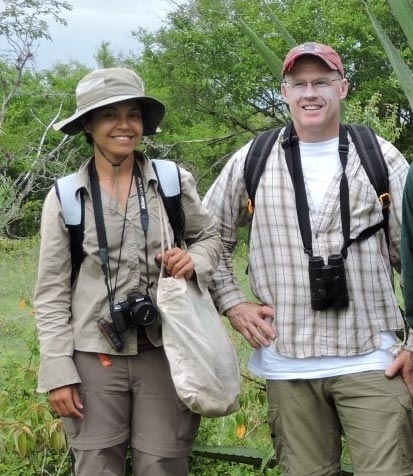
Fabiola Rodriguez and Jeff Larkin
Why IUP? Faculty Open, Respectful of New Ideas
I had applied to so many programs, and the program at IUP was such a light among the other programs. What made it that way was the attitude that the faculty have. They’re very open to opportunities and new ideas. They treated me with respect, asking about my ideas, like they were training me to become a peer.
—Fabiola Rodriguez M’17
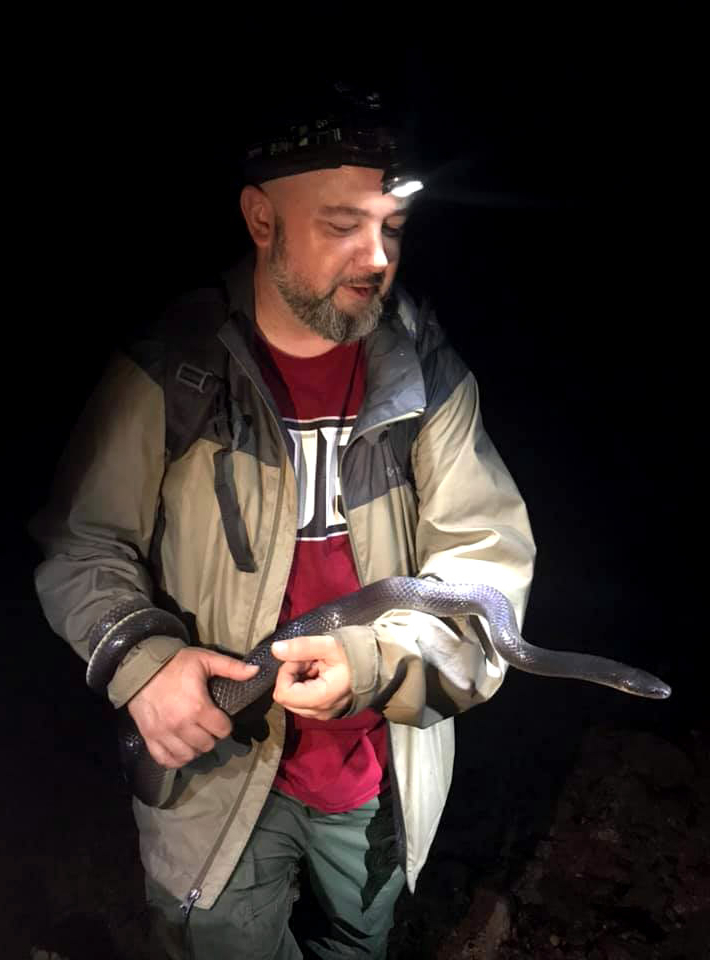
Josiah Townsend
She was introduced to IUP’s graduate programs through another Biology Department professor, Josiah Townsend, who has been studying amphibians and reptiles in Honduras for more than 20 years.
He’s led student groups to Honduras in 2013, 2014, 2015, 2017, and 2019, with both graduate and undergraduate students completing and publishing research projects under his guidance. This summer, Townsend will lead a new, faculty-led, study abroad program for IUP students: Tropical Biodiversity and Sustainability in Honduras.
Townsend and his students have discovered and named more than two dozen new species during his years of research in Honduras, including salamanders, frogs, snakes, and lizards.
“There may even be a couple of the new species we have named that live at Fabiola and Jeff’s research sites,” he said. “Honduras is just an amazing place in terms of biological and cultural diversity, and the [MDI/NSF] project and Jeff’s involvement really help to put IUP in a leadership position for international research there.”
